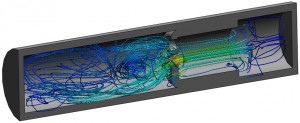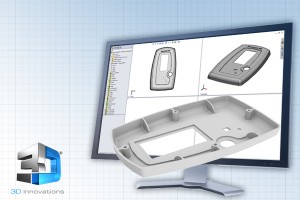We are taking it back to the basics today with a blog post about the evolution of CAD. We all use CAD, but do you know its history?
Modern engineering design and drafting can be traced back to the development of descriptive geometry in the 16th and 17th centuries. Drafting methods improved with the introduction of drafting machines, but the creation of engineering drawings changed very little until after World War II.
During the war, considerable work was done in the development of real-time computing,  particularly at MIT, and by the 1950s there were dozens of people working on numerical control of machine tools and automating engineering design. But it’s the work of two people in particular—Patrick Hanratty and Ivan Sutherland—who are largely credited with setting the stage for what we know today as CAD.
particularly at MIT, and by the 1950s there were dozens of people working on numerical control of machine tools and automating engineering design. But it’s the work of two people in particular—Patrick Hanratty and Ivan Sutherland—who are largely credited with setting the stage for what we know today as CAD.
The Fathers of CAD
Hanratty is widely credited as “the Father of CADD/CAM.” In 1957, while working at GE, he developed PRONTO (Program for Numerical Tooling Operations), the first commercial CNC programming system. Five years later, Sutherland presented his Ph.D. thesis at MIT titled “Sketchpad, A Man-Machine Graphical Communication System.” Among its features, the first graphical user interface, using a light pen to manipulate objects displayed on a CRT.
The 1960s brought other developments, including the first digitizer (from Auto-trol) and DAC-1, the first production interactive graphics manufacturing system. By the end of the decade, a number of companies were founded to commercialize their fledgling CAD programs, including SDRC, Evans & Sutherland, Applicon, Computervision, and M&S Computing.
By the 1970s, research had moved from 2D to 3D. Major milestones included the work of Ken Versprille, whose invention of NURBS for his Ph.D. thesis formed the basis of modern 3D curve and surface modeling, and the development by Alan Grayer, Charles Lang, and Ian Braid of the PADL (Part and Assembly Description Language) solid modeler.
With the emergence of UNIX workstations in the early ’80s, commercial CAD systems like CATIA and others began showing up in aerospace, automotive, and other industries. But it was the introduction of the first IBM PC in 1981 that set the stage for the large-scale adoption of CAD. The following year, a group of programmers formed Autodesk, and in 1983 released AutoCAD, the first significant CAD program for the IBM PC.
 The CAD Revolution
The CAD Revolution
AutoCAD marked a huge milestone in the evolution of CAD. Its developers set out to deliver 80% of the functionality of the other CAD programs of the day, for 20% of their cost. From then on, increasingly advanced drafting and engineering functionality became more affordable. But it was still largely 2D.
That changed in 1987 with the release of Pro/ENGINEER, a CAD program based on solid geometry and feature-based parametric techniques for defining parts and assemblies. It ran on UNIX workstations—PCs of the time were simply not powerful enough—but it was a game changer. The later years of the decade saw the release of several 3D modeling kernels, most notably ACIS and Parasolids, which would form the basis for other history-based parametric CAD programs.
CAD Today, CAD Tomorrow
The modern CAD era has been marked by improvements in modeling, incorporation of analysis, and management of the products we create, from conception and engineering to manufacturing, sales, and maintenance (what has become known as PLM, product lifecycle management).
“Engineers and designers are being asked to create more, faster, and with higher quality,” says Bill McClure, vice president of product development at Siemens PLM. With all of this pressure on engineers and designers, what do you see as the next big evolution in CAD?
This article is a reprint from Desktop Engineering, click on the article title to view the original article in its entirety: Evolution of Computer-Aided Design
________
3D Innovations is a full service 3D Engineering/Design company – from the 3D Design to a fully functional 3D Prototype & Product.

